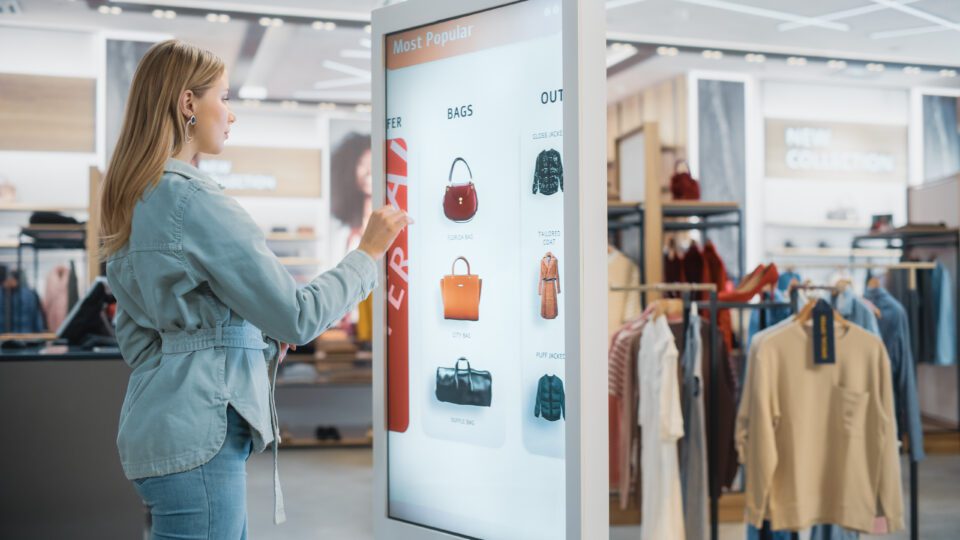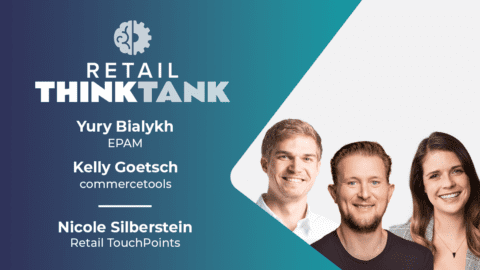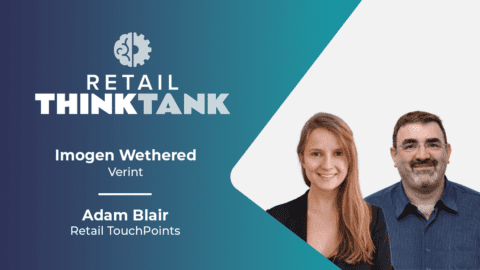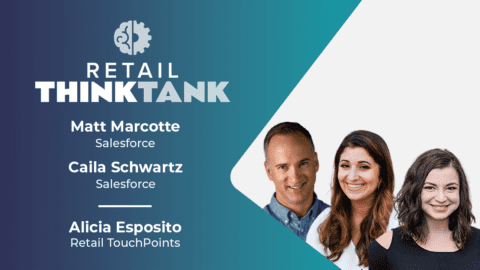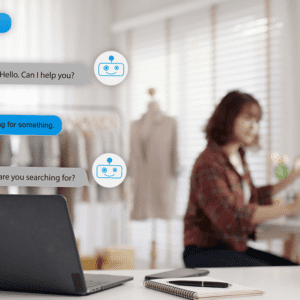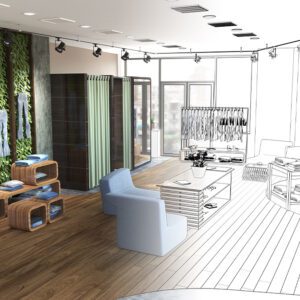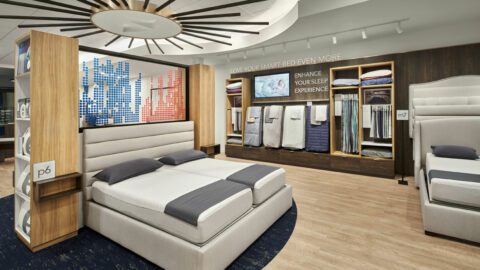Brands and retailers are navigating two conflicting realities when it comes to their in-store experiences: they know they must adapt their store experiences to new shopper expectations, but at the same time they are dealing with tighter store design budgets.
As a result, store design teams are thinking more critically, and intentionally, about their new physical experiences — especially if technology plays a supporting role. Although 43% of retail executives said technology plays a “much more important” role in their in-store experiences and merch displays than it did two years ago, 63% admitted that they want to better integrate that technology into the overall experience, according to data from Retail TouchPoints.
“It’s not just about what’s hot, it’s about what’s effective,” said Brent Hollowell, Chief Marketing Officer of Volumental, a fit tech company that provides shoe recommendations based on 3D foot scans, retail purchase data and AI. “I’ve chased the FOMO stuff when I was at Foot Locker and Adidas…it’s easy to chase stuff that’s frothy. But retailers have to invest in things that will make them not just different, but better and more relevant. They have to think of differentiation and relevance as two sides of the same coin.”
Experts across the retail spectrum offered their step-by-step tips and best practices to strategize and implement technology to create relevant, intentional in-store experiences:
Step 1: Make Sure Your Foundation is Solid
Before brands can even think about implementing new customer- or associate-facing technology, they need to ensure that they have the right back-end systems in place to make devices work effectively. For example, in-store kiosks can’t support endless aisle experiences if they aren’t underpinned by real-time inventory visibility and omnichannel order management capabilities.
“Do retailers have interest in technologies that garner a lot of attention and PR? Yes. But if you’re not fully connecting inventory, orders and customer information, nothing else is going to work,” said Dave Bruno, Director of Retail Market Insights at Aptos, in an interview with Retail TouchPoints. “For example, fitting room technology, where you can access inventory in real time and check out right through the platform has to somehow end up back at the point of sale, on the website, the mobile app and everywhere else. All transaction elements and devices need to know about that product and about the consumer.”
This integration is especially critical for pop-up shops, which typically carry limited inventory and are driven by entertainment, services and other forms of brand immersion. “All the sizzle that goes into these new store experiences is severely limited or compromised without the ability to connect customers, orders and inventory to those experiences, regardless of the technology being used,” Bruno added.
Step 2: Set Focused, Measurable Goals
Technology implementations always should align to specific goals and outcomes — whether they’re for an existing store, a new opening, a pop-up shop or an experiential concept. Store design teams need to determine what exactly they’re trying to accomplish within their spaces and how they will ascertain whether these goals are met.
When MG2 and its studio The Lionesque Group work with clients, they map out the entire customer journey and how technology can support the most critical phases of that journey. “We map out the journey as a whole and identify the current pain points that we’re trying to solve for,” explained Melissa Gonzalez, Principal at MG2 and Founder of The Lionesque Group, in an interview with Retail TouchPoints. “It’s always important to ask the ‘why’ because there are plenty of times when we’ll get a brief or a mood board and it’ll suggest technologies, so I’m always asking why we need them.”
Step 3: Understand the Needs (and Limits) of Users
After brands identify their “why,” they need to align their business objectives to the needs and expectations of users, which could be consumers, associates or both.
“[Brands] have to be omnipresent, and that means being there for your customers at the time and in the way they expect you to be there,” Hollowell said. “That bar is constantly getting raised, but retailers are sticking their heads in the sand or focusing on things that don’t really move the needle.”
While convenience tends to be a “table stakes expectation” for many in-store shoppers, consumer surveys conducted by MG2 have found that there are nuances within specific categories or sub-industries, such as:
Advertisement
- Kids: 43% of consumers said that mobile tools were the most valuable in-store technology;
- Beauty: 61% of consumers want personalization tech to receive color and tone recommendations; and
- Footwear: 40% of consumers said fit-scan technology would benefit their in-store experience
No matter the category, brands need to be mindful of whether the technology they want to roll out will actually provide value, or if it will create unnecessary friction.
“With tech, you have to be careful of the ‘bells and whistles’ trap, and really make sure that any tech you implement serves a purpose,” Gonzalez advised. “The technology that’s successful tends to be the one that furthers existing behaviors and is natural and additive to the way we operate in the store.”
Step 4: Evaluate and Prioritize Your Tech
Once teams identify their goals and the pain points they’re trying to address, they can pinpoint the key functionalities that will support their needs and goals. Then, by assessing their existing technology stack, they can determine whether they can use current solutions or if they need to invest in something new.
For example, if education is a big pain point because a brand has very technical products, then responsive shelves or “lift and learn” technology can help support the customer journey, Gonzalez explained: “But is the store integrated with the RFID needed to activate this technology? Do you have sensors? There are multiple layers that retailers need to work through.”
There are also adjacent areas to consider, such as the content and storytelling conveyed through in-store technology and how in-store tech should coexist with the tactical experience.
Step 5: Align All Teams on the Vision and Execution Plan
Store design no longer operates in a silo. According to the 2023 Store Design & Experience Survey, store design now operates with marketing (79%), operations (77%) and IT (73%) when rolling out new formats and experiences.
“There are a lot of intricacies and interdependencies for the technology to work [in a store],” Gonzalez said. For example, if a retailer wants to roll out responsive signage in stores to support its retail media offerings, the marketing team needs to be aligned on how campaigns will be implemented and how content will be managed, she added. The sales and merchandising teams also may need to be involved so they fully understand how these campaigns could impact revenue and product sell-through.
“It’s really about making the business case — identifying the opportunity and the possible impact, sharing the tools that will get you there, the level of required investment and how long it’ll take before you start to see results,” Gonzalez added.
Step 6: Derive Insights to Support Decision-Making and Future Innovation
The power of digital technology lies in the data it creates. After technology is implemented in stores, all teams need to track and discuss the insights they glean — and identify ways to improve and optimize those investments. They also should interview store associates and managers to add a qualitative layer to the data-gathering process and possibly uncover new opportunities for innovation.
“Sometimes, the technology itself might be useful, but the way you’ve implemented it may not be the best, most high-value [application] for your business,” Gonzalez said. “When you roll out technology, be sure to pilot it, be upfront about what you consider success, and test it so you can pivot if you need to.”
For example, one brand implemented digital screens to provide in-store styling capabilities to customers, but adoption was very low. “They could have ripped the technology out of the store, but instead, they pivoted and it became a clienteling solution for store associates, so it became very purposeful,” Gonzalez explained. “Brands need to test and see if there’s a pivot they can make before they decide to fully roll new technology out.”
In-store tech can also garner data that helps brands better understand the behaviors of consumers in specific markets, and whether the technology has the opportunity to scale to more stores and even new formats.
“If you invest in the right core technology — technology that is intentional — you can unshackle marketing and design experiences that are more experimental,” Bruno said. “Because the cost of putting an iPhone in an associate’s hand in a store is no different than putting that technology in a pop-up or store on an airstream. Intentional technology decisions have the power to lead to spontaneous experience decisions.”




